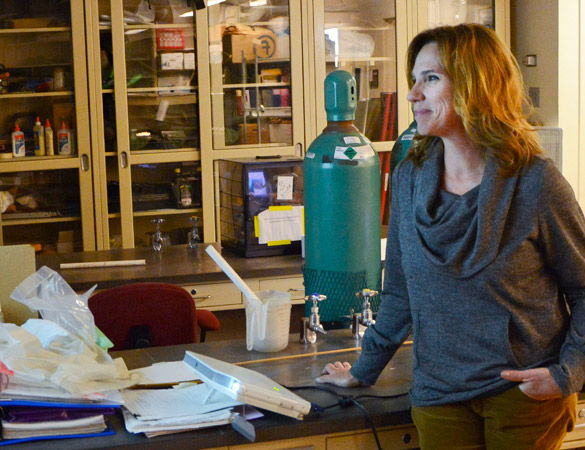Professor works to save Everglades

October 21, 2014
Everglades National Park is one of the largest habitats of biodiversity in the U.S., home to species like the American alligator, Florida panther and manatee. But the region has been greatly affected by the pollution and farming of humans.
In 2000, Congress passed the Comprehensive Everglades Restoration Plan, a 30-year, $7.8 billion effort to restore the Everglades. This plan requires a panel of experts to review the restoration work every two years, and an SIU professor was selected to be a member of what was the fifth committee.
Loretta Battaglia, an associate professor of wetland ecology, was selected by the National Research Council to be part of the 14-person council, which began in 2012.
Advertisement
One of the fields the team researched was the effect of invasive species. These non-native plants and animals create many problems for the natives.
Burmese pythons are one of the more publicized invasive species.
Battaglia said many Floridians acquired the big snakes to be pets, but later released them either because the snakes grew too big, or because the owners could no longer afford the animal. The pythons create issues with the native food chain.
The snakes have decreased the population of the top native predator, the American alligator, Battaglia said.
Committee member Daniel Simberloff, a professor of environmental studies at the University of Tennessee-Knoxville, said pythons have caused a 90 percent loss of medium-sized native mammals in the region.
Battaglia said it is hard to estimate the population of the snakes because the animals are always moving, but attempts have been made to track the snakes.
“One of the treatments that’s available is licensed hunting, but it’s had extremely limited success,” she said.
Advertisement*
Simberloff said wild boars and feral cats are two other major invasive species in the Everglades.
While Battaglia worked with the animals, her main focus was invasive plant species.
Battaglia said the Japanese climbing fern, Brazilian pepper and melaleuca plant are three of the largest culprits, all of which increase the chances of fires.
“When this particular fern gets established, it climbs up and down the trees and tree islands and just carpets it—blankets it,” she said. “It is very susceptible to fire. Once it catches on fire, it makes these big flame ladders that extend all the way up through these tree island canopies.”
The embers can be blown away by the wind and catch other areas on fire, Battaglia said.
Simberloff said these plants require more water to survive than natives, reducing the amount of groundwater.
Several biological agents have been researched to reduce the populations of these foreign species. The agents are natural predators from the species’ home, but there are concerns those agents will become invasive themselves.
Battaglia said Native American tribes in Florida, specifically the Miccosukee, are greatly concerned if the restoration work has any harmful side effects, as a tree significant to the tribe is already suffering from an invasive fungus.
She said the red bay tree is important to the Miccosukee because they use the wood for traditional ceremonies. However, these trees are dying from Laurel wilt disease, which was brought to the U.S. by beetles from Asia in the 1990s.
“This beetle carries this fungus in its mouth parts and whenever it burrows into these trees, the fungus gets into the water system of the plant and blocks it,” she said. “Essentially, the tree dies from thirst. All of the leaves wilt and 90-something percent die shortly thereafter.”
The avocado tree is also afflicted by Laurel wilt disease, Battaglia said.
Climate change is another aspect covered in the report, which was published in June.
Jeff Walters, chairman of the panel and a professor of biology at Virginia Tech, said climate change is of major interest to Floridians. He said high tides are reaching streets in parts of Miami. Salt water is also mixing with the fresh water, affecting the groundwater for farmers.
“It’s something they have to start dealing with because it’s affecting their water supply,” Walters said.
He said fresh water is being pumped into the Everglades as part of the restoration plan.
Simberloff said he enjoyed working on the project, but now the job is out of the panel’s hands.
“Writing the report went very well, but what happens next remains to be seen,” he said. “Congress will see it and the government of Florida will see it, so it’s up to them.”
Battaglia is also working on restoration efforts around the Mississippi River.
“I am flattered—honored to be working on two of the biggest wetland restoration projects in the world,” she said. “Working on it, in the sense that I have some input on how it’s being done. That’s very rewarding for me because they are two systems that I really care about.”
Austin Miller can be reached at [email protected] or on Twitter @AMiller_DE.
Advertisement








